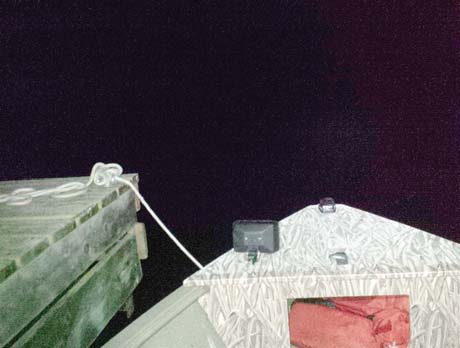 Boating after dark requires preparation and skills
Boating after dark requires preparation and skills
Sooner or later, if you boat long enough, you will be boating after the sun sets. Whether it is just for a short distance or an overnight trip, boating in the dark requires advance preparation and skills that we may not exercise for day boating.
Even on a moonlit night, the use of artificial lights such as docking lights and spotlights, will restrict your forward vision. Artificial lights should only be used sparingly to dock or to operate in areas limited manoeuverability.
Boating at night starts with a thorough review of your knowledge and abilities, and a review of your boat and its’ safety gear. Darkness makes everything more difficult and you don’t want to have to be repairing your boat while bouncing around on the water at night. So rule number one is to ensure that your boat is in tip top shape before you even consider heading out at night. Everything should be working correctly and loose gear should be packed away.
Next you should brush up on your own knowledge. Whether you use a GPS system, a chart plotter, or paper charts, you will need to rely on a few essentials.
First is a good working knowledge of the route you will take. Make sure it is marked clearly and you can find escape routes and anchorages if you need them to get out of the channel.
Are you able to identify navigation lights, beacons and other aids at night? Can you tell the difference between a flashing light and a quick flashing light? Do you know where you will expect to see these aids along the way?
Especially in areas where there are shore lights or other distractions, it will be important to be able to identify which lights are navigation light and which is any other type of light.
Being prepared is key. Check and double check your safety gear. Your own navigation lights should be working properly and they should be clearly visible, not hidden behind items stored on the decks or overhead. Your lifejackets should be readily available and
already sized to fit each person.
Flares and flashlights should be close by and hopefully the flashlight will have a red lens to avoid interfering with your night vision. Anchors, flares and other emergency gear should be ready to use.
It is useful to have glow sticks for each person on board in case you have an overboard
situation. It is easier to locate a glow stick on the water at night than a person.
Of course, as in any journey on board a boat, you should check the weather forecast for the duration of your cruise. And don’t forget you will be traveling slower so you will need more time. A Trip Plan should be filed with someone responsible and the boat should be filled with fuel.
Before you set out make sure your eyes are prepared. It can take up to an hour for our eyes to adjust fully to seeing in the dark. And one flash of white light can destroy that
vision for another long period of time.
Prepare your eyes by avoiding white light. If you have a lighted dash or lighted equipment, try to get a red light or lens. If this is not feasible, cover the white lights with a cloth.
While underway. The key to safe boating at night is to go slow. Floating debris and other objects cannot be readily seen in the dark and can cause damage to your boat. The slower you are traveling the less likely you are to have an accident and the more likely you are to spot something in time.
The dark is also disorienting. Trust your charts, your electronics, and your compass more than your own senses as they may be confused in the unusual operating conditions.
You should have one or more look-outs posted. In clear areas without a lot of underwater
obstructions or other boats, you can get away with one lookout, but they should be rotated as it is a strain to watch and watch in the dark. Your lookout should be listening as well as watching.
Keep distractions at the helm to a minimum. No televisions or other such electronic devices should be within eyesight and if there are conversations, have the folks move down below. You will need to hear what is going on with your look out.
Underway in the dark, avoid the use of your spotlight or docking lights. While it can be comforting to see ahead of you a few feet with these lights on, that is all you will be able to see. Your eyes will adjust to that light level and everything else will be dark.
If you are coming upon another vessel, give it as wide a berth as possible. You may be surprised at how close you come to it even though you think you are quite a distance off.
Distance is difficult to judge in the dark.
If that boat is operating with spotlights or docking lights on, avoid looking at them. You will ruin your own night vision. For your own safety, ensure that the only lights showing from your boat are your red and green port and starboard lights, your stern light, or a masthead light. Any other lights, such as cabin lights, may be distracting to other vessels on the water and they may not be able to pick out your own navigation lights.
Anchoring at night. If you anchor, make sure you turn off your navigation lights. It can be fun to star gaze at night as well. However, avoid tilting your head and watching the stars too long. At night on the water this can lead to vertigo and seasickness.
Finally, if you stop for a swim, make sure that you ease into the water, do not jump and do not dive. You will not be able to see obstructions under the water, or even the actual depth. Avoid injury by slipping into the water slowly.
Operating at night requires new skills and absolute confidence in your boat. If you think you want to travel at night, spend a few evenings practicing. Start with weekdays when the waterway isn’t busy and try starting under a full moon, working your way gradually to the new moon.
The skills you learn will be worth having in case you ever need them.

